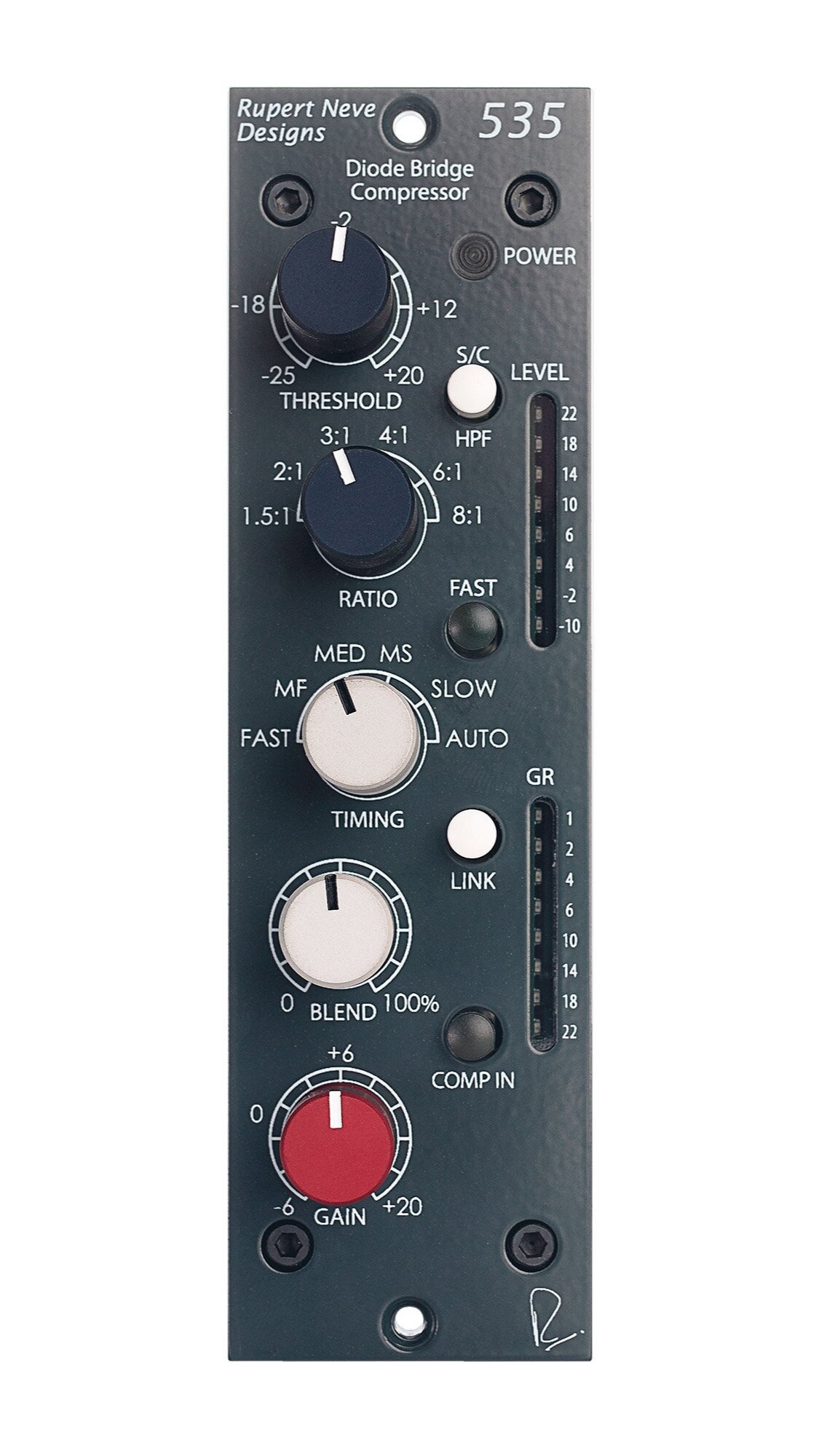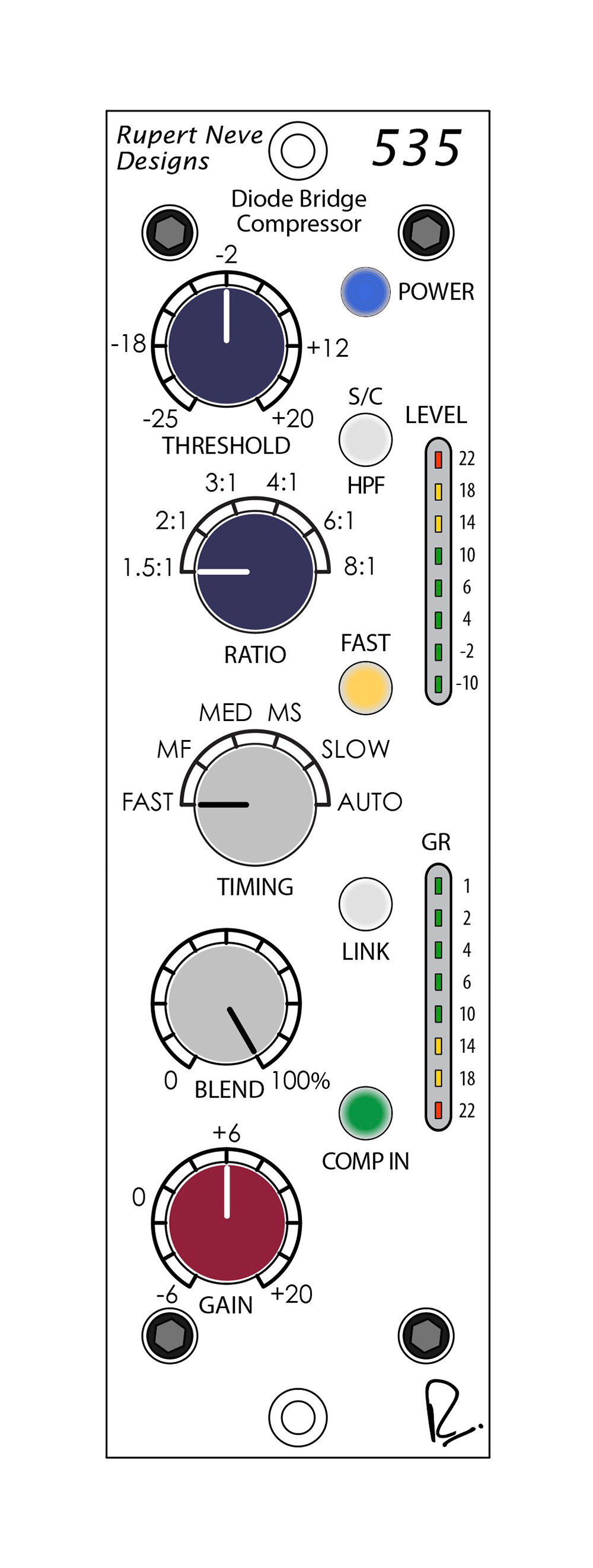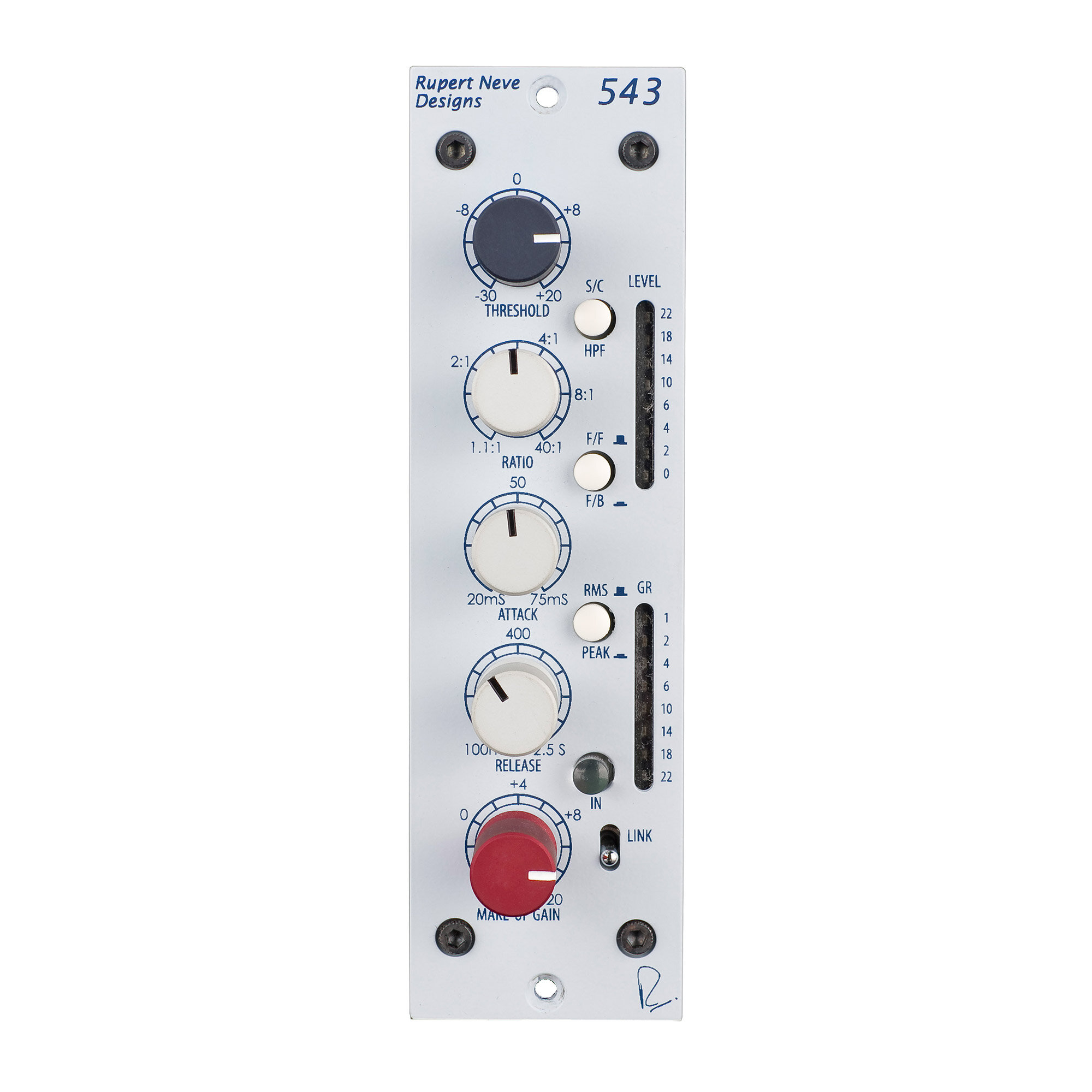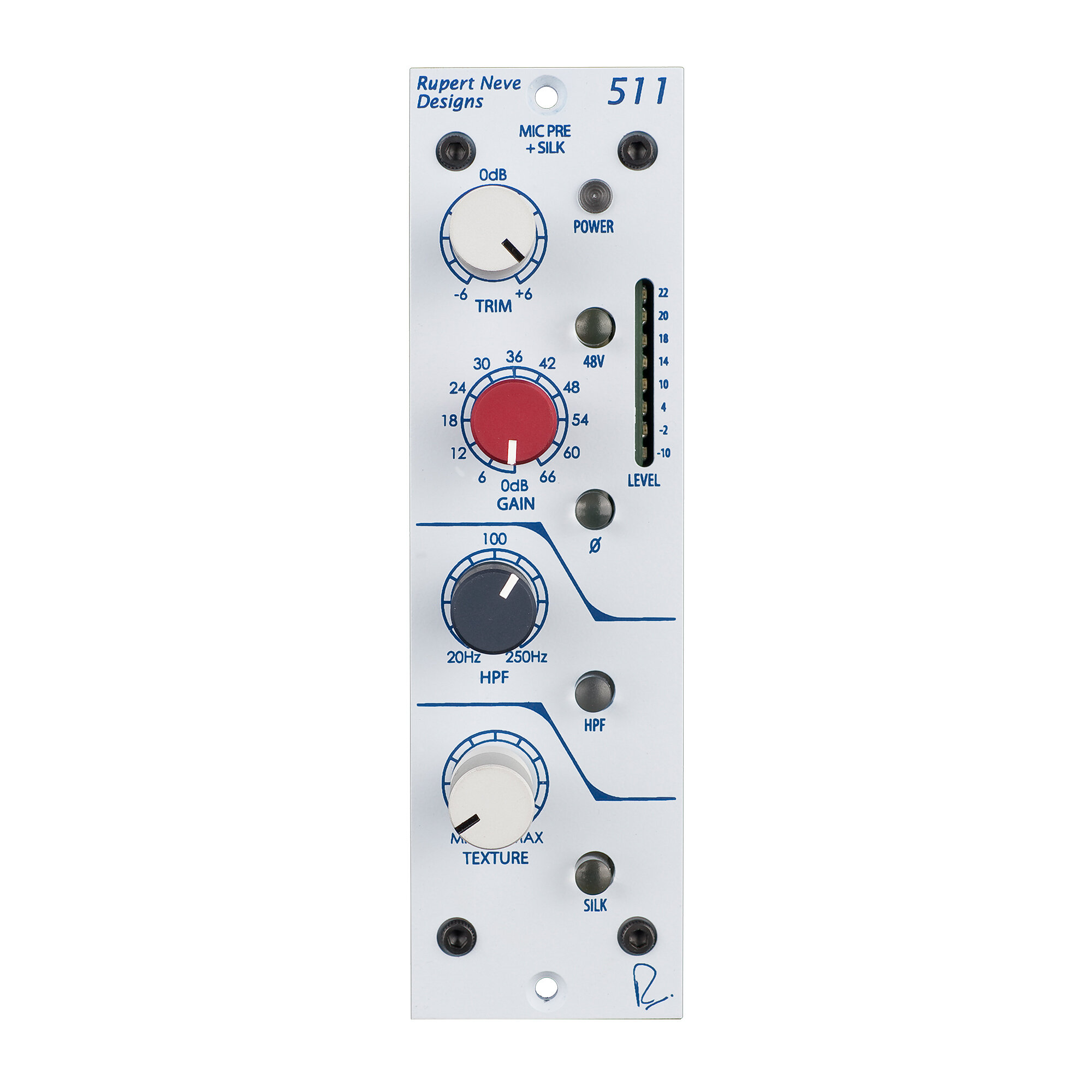
535
500 Series Diode Bridge Compressor
OVERVIEW / MEDIA / FEATURES / REVIEWS / SPECS & RESOURCESPunchy, thick, and versatile.
Originally developed for the dynamics circuit of the acclaimed Shelford Channel, the 535 Diode Bridge Compressor captures the soul of Rupert Neve’s original 2254 compressor while providing modern updates including advanced timing control, significantly lower noise, fully stepped controls throughout, and internal parallel processing capabilities.
“It makes things sound bigger, bolder, and (in my opinion) more interesting.”
What is diode bridge compression?
Where the VCA compressor found in the Master Buss Processor provides unmatched clarity, the weighty, harmonically rich tonality of diode bridge compression can be essential in pushing key sources like vocals, electric guitars, bass and drums to the forefront of a mix.
By understanding the limitations of vintage units like the legendary 2254, painstaking effort was taken to reproduce the unique tone of these classics while improving the noise floor & accuracy, expanding inflexible time constants, adding full wave sidechain detection for improved dynamic response, and widening the range of threshold and ratio controls.
Delivering the powerful sound of these iconic designs with enhanced flexibility for the modern age, the 535 Diode Bridge Compressor is a dynamic tool equipped to make a bold statement on virtually any mix or track.
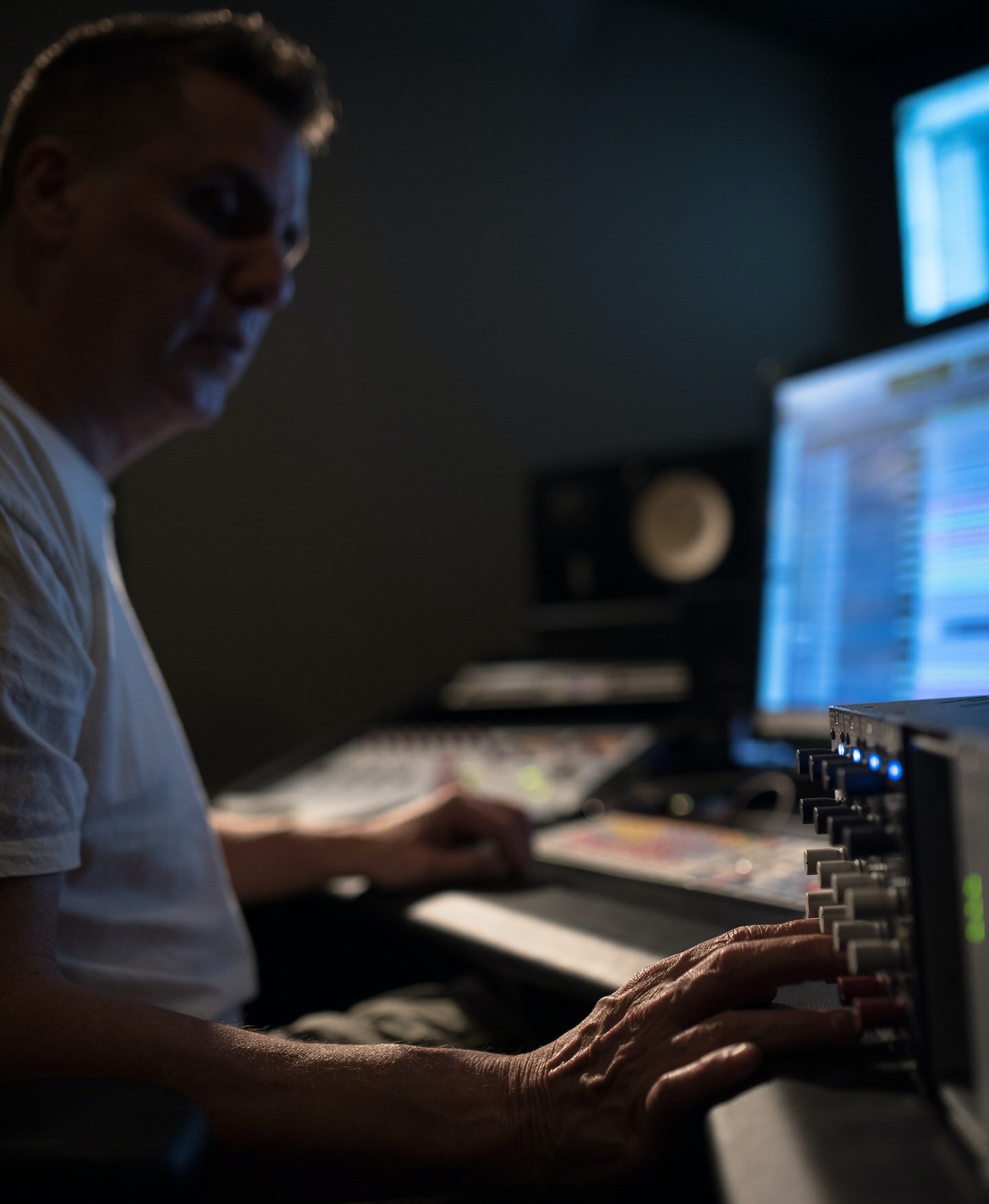
“A diode bridge is a very unique sound characteristic compared to other types of compressors. It is possible to create a cleaner sounding diode bridge than we have here, but we were after a particular flavor of harmonic content. As soon as you hear the sound, you know exactly what it is.”
Dennis Alichwer
Engineering Manager, Rupert Neve Designs
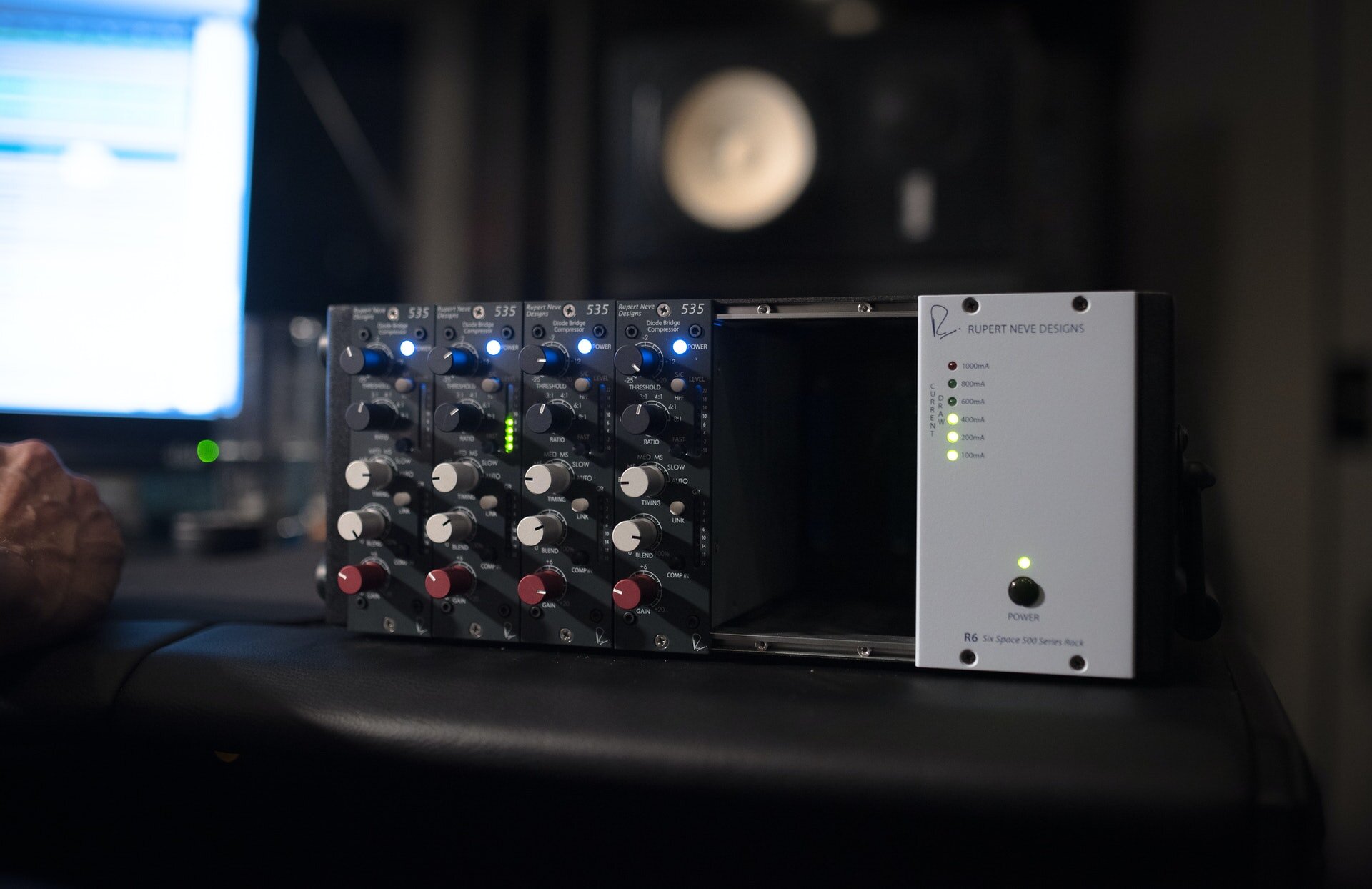
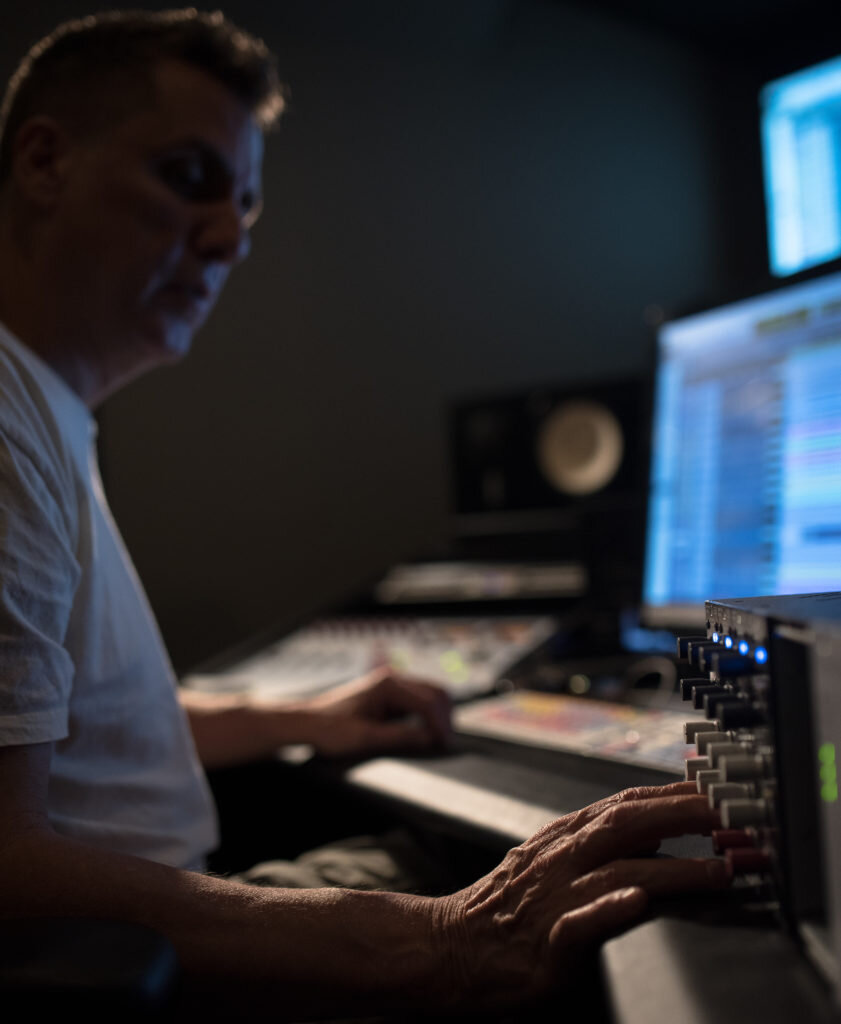
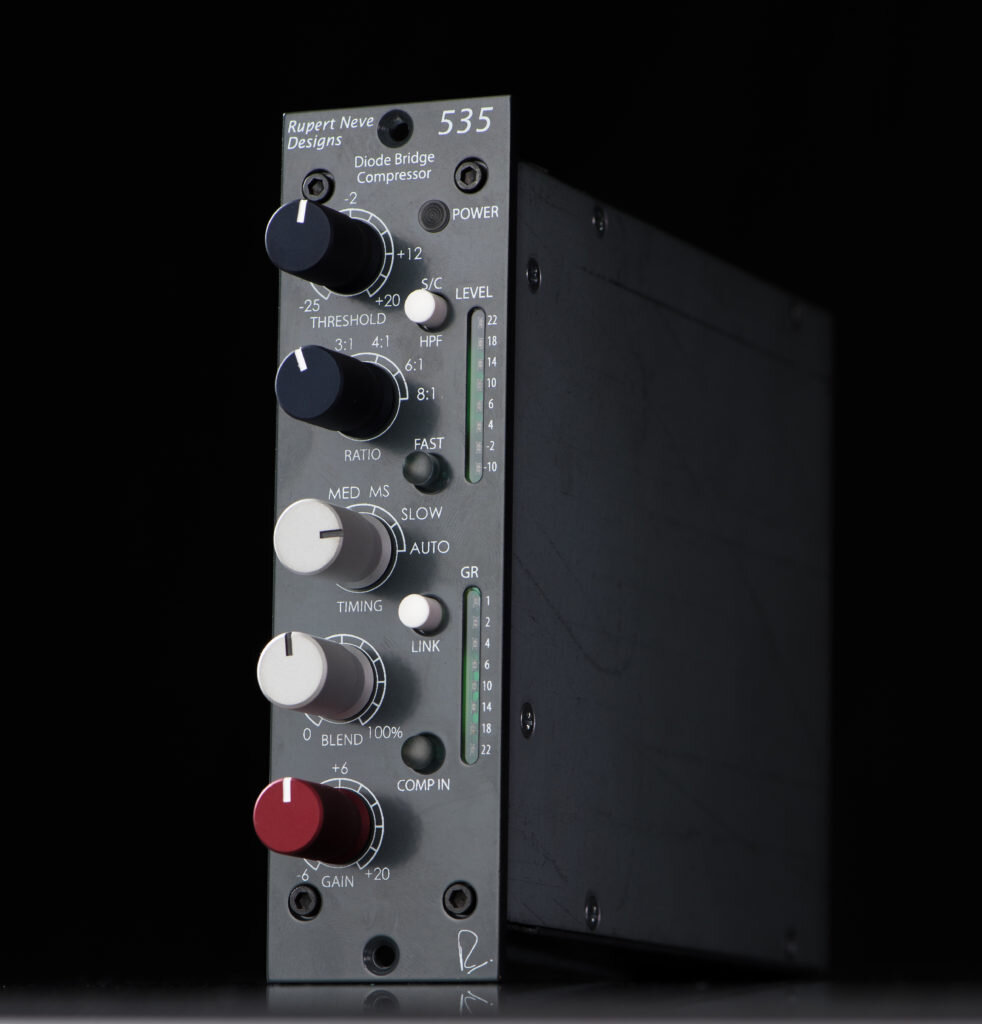
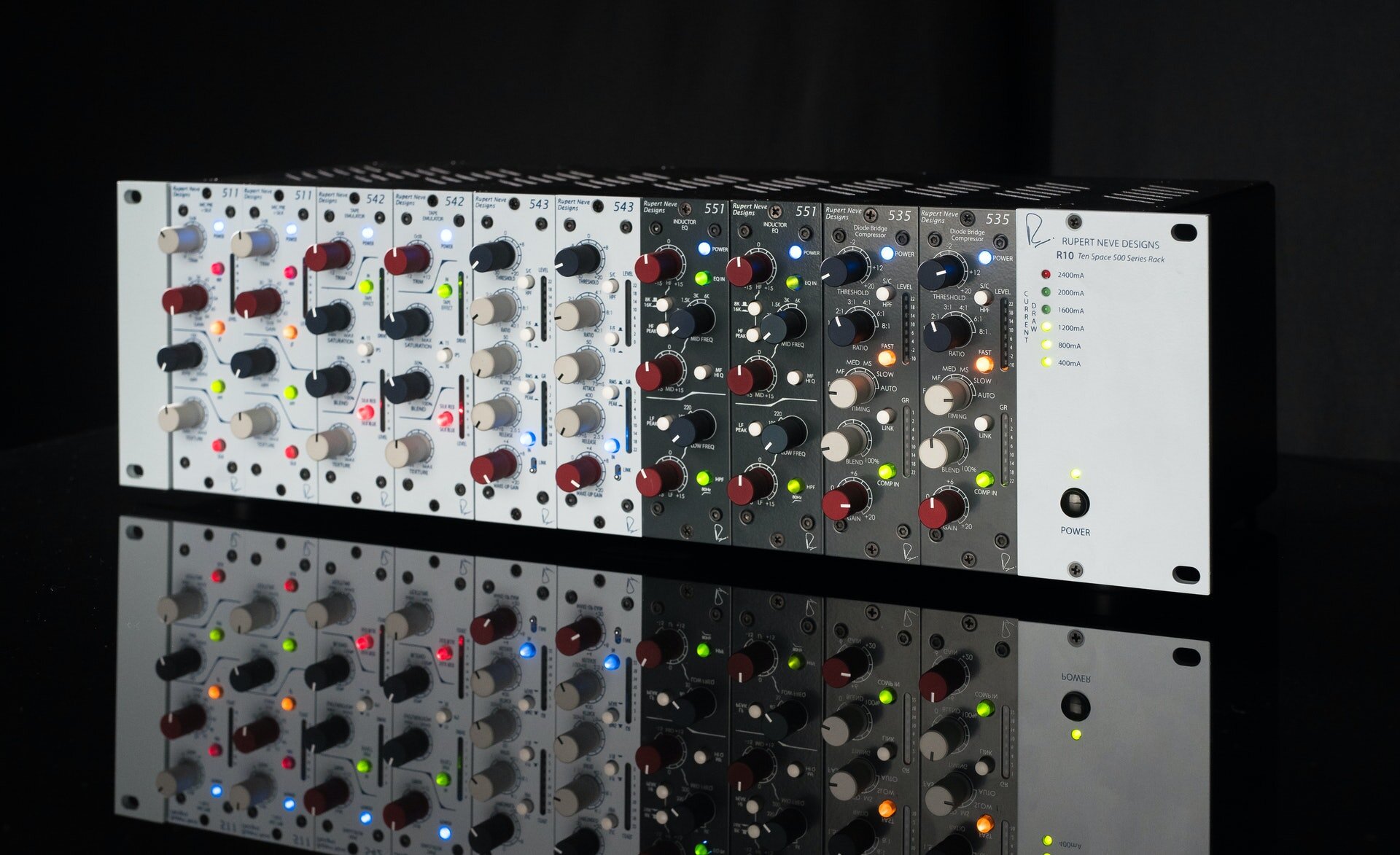
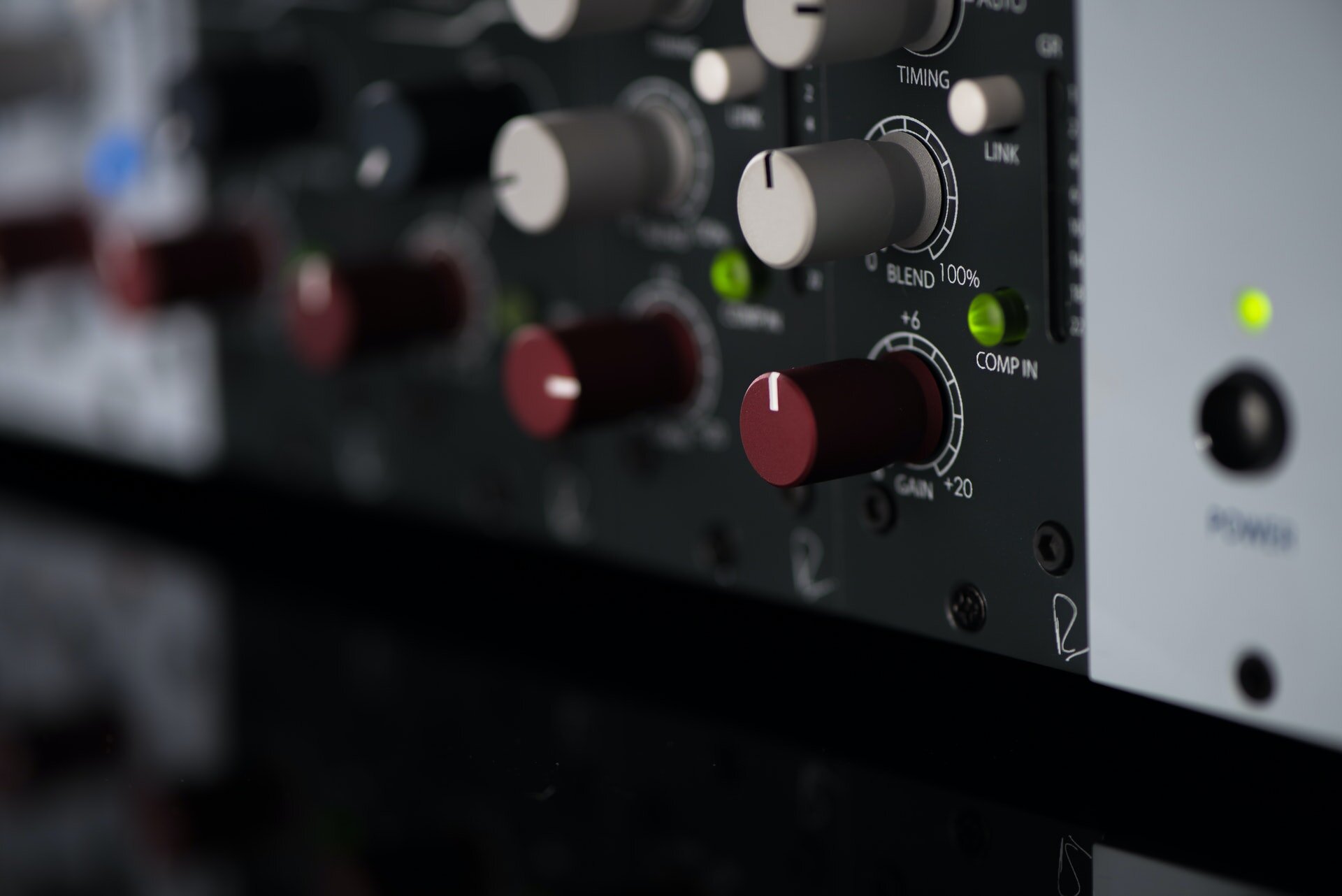
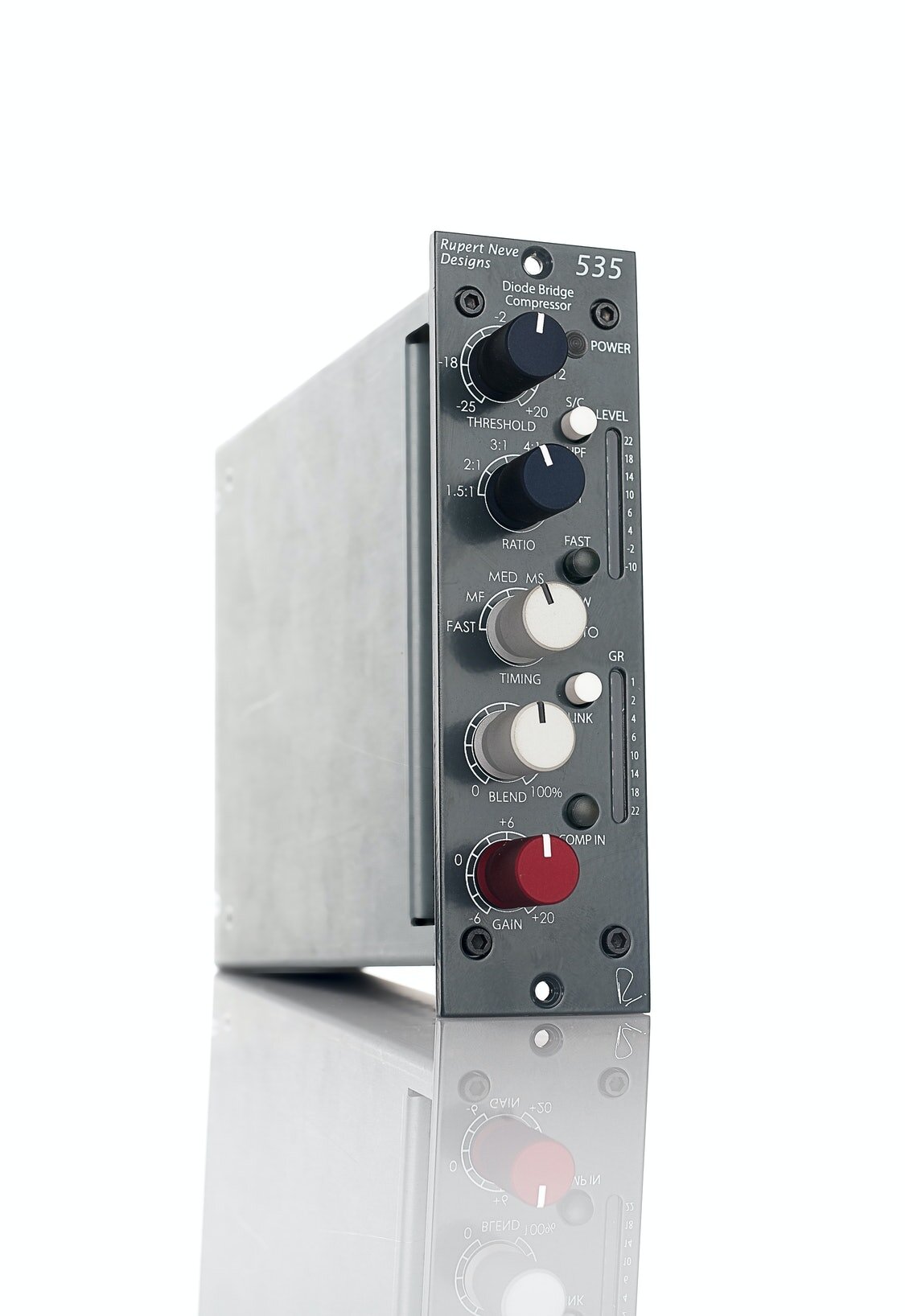
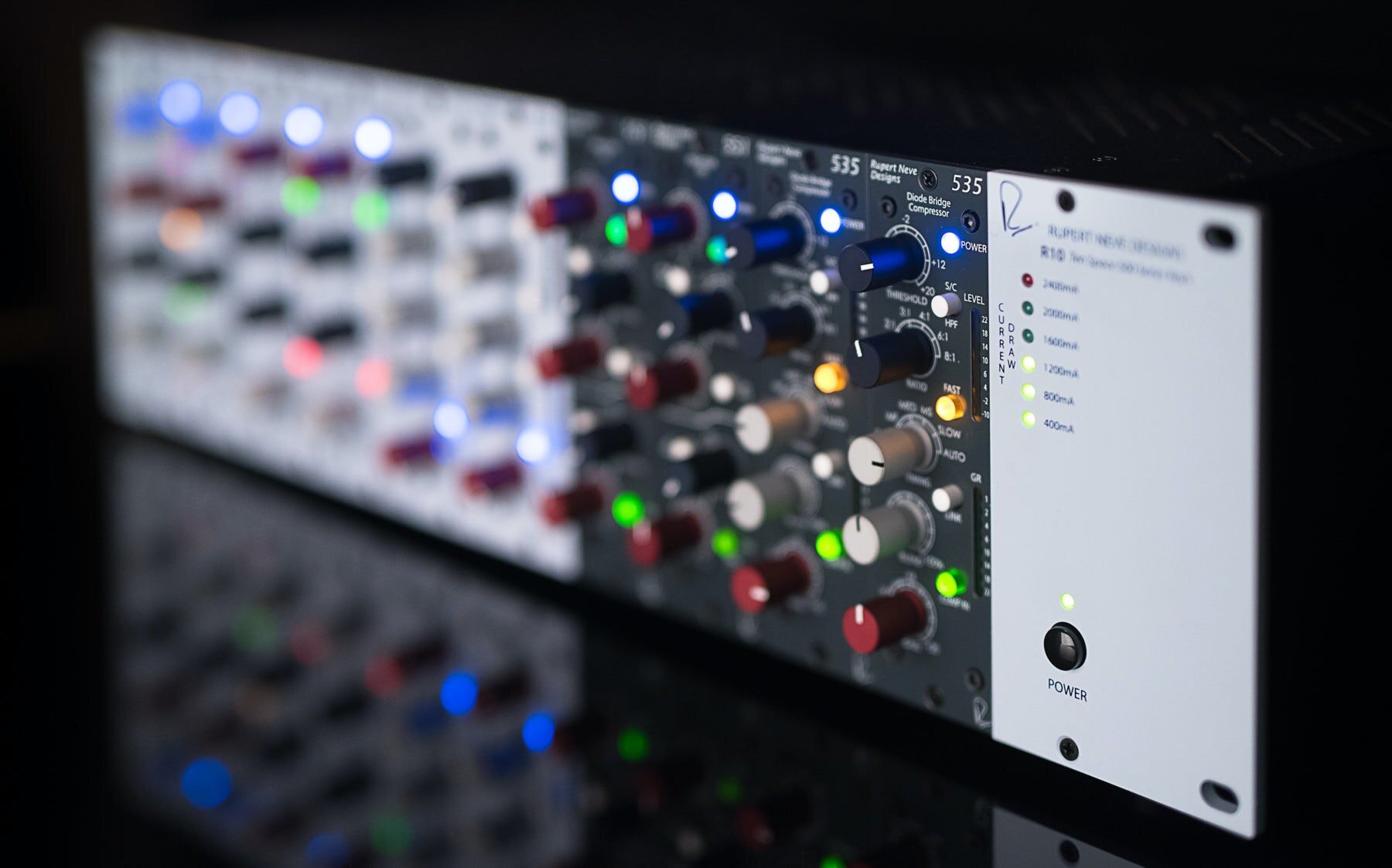
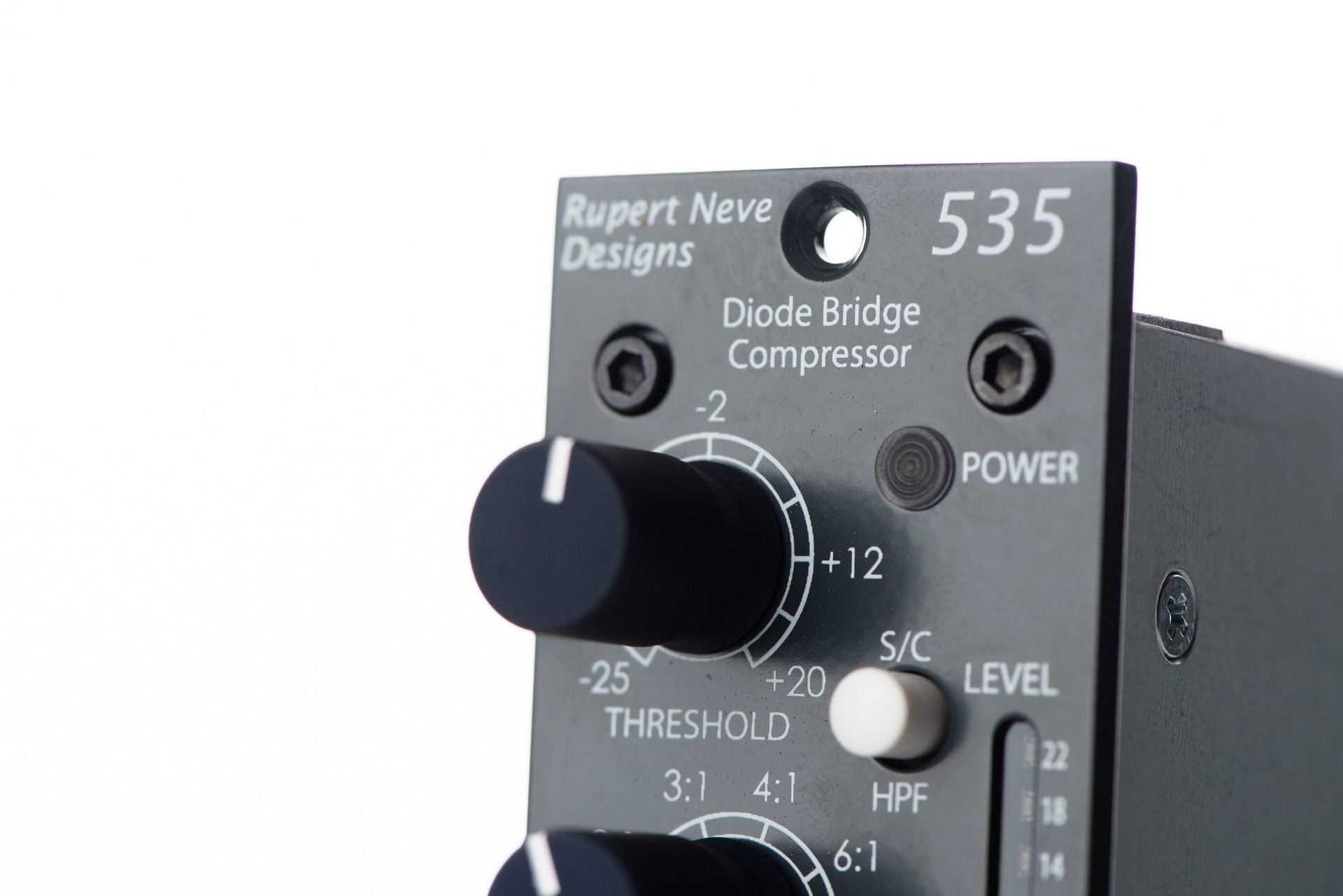
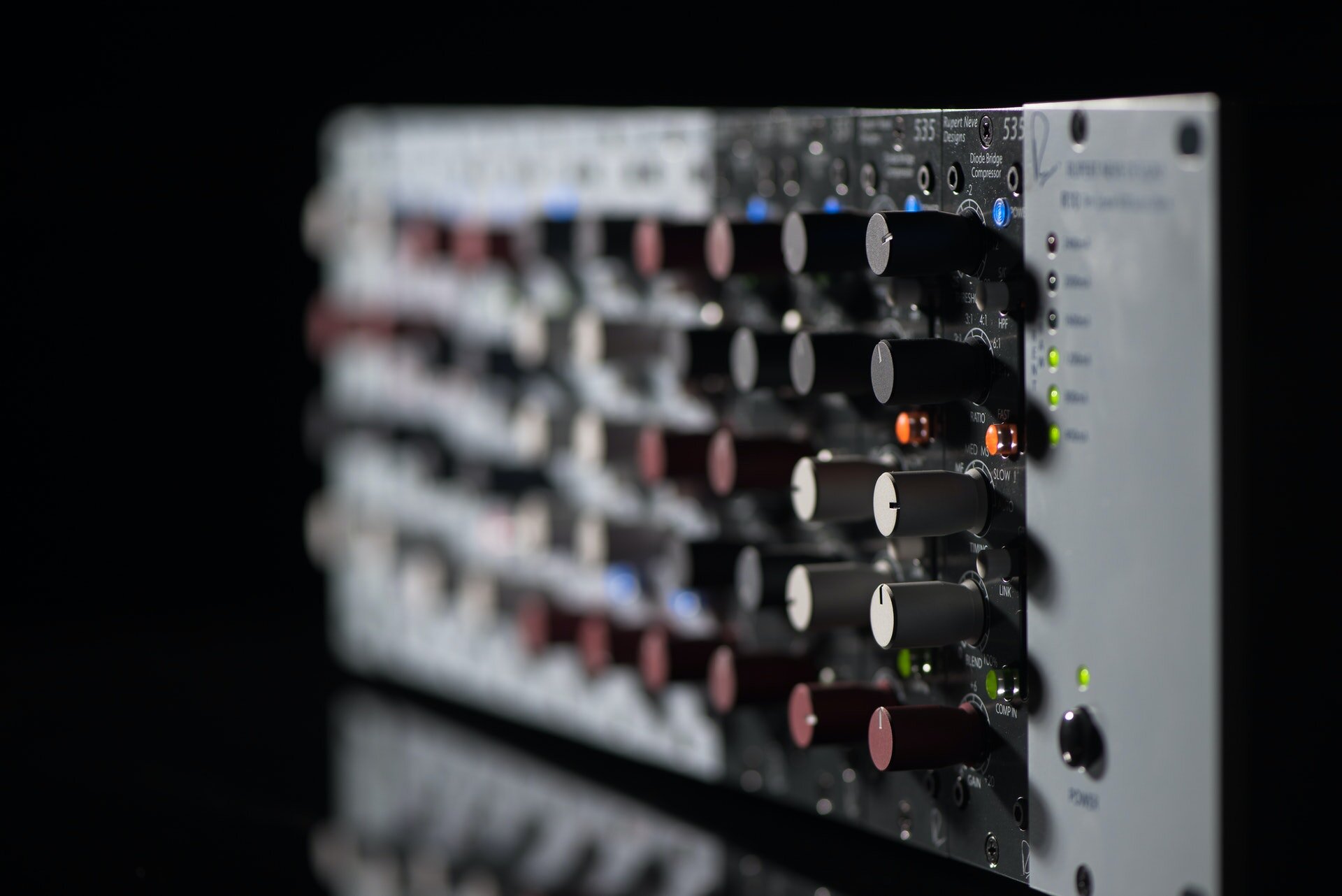
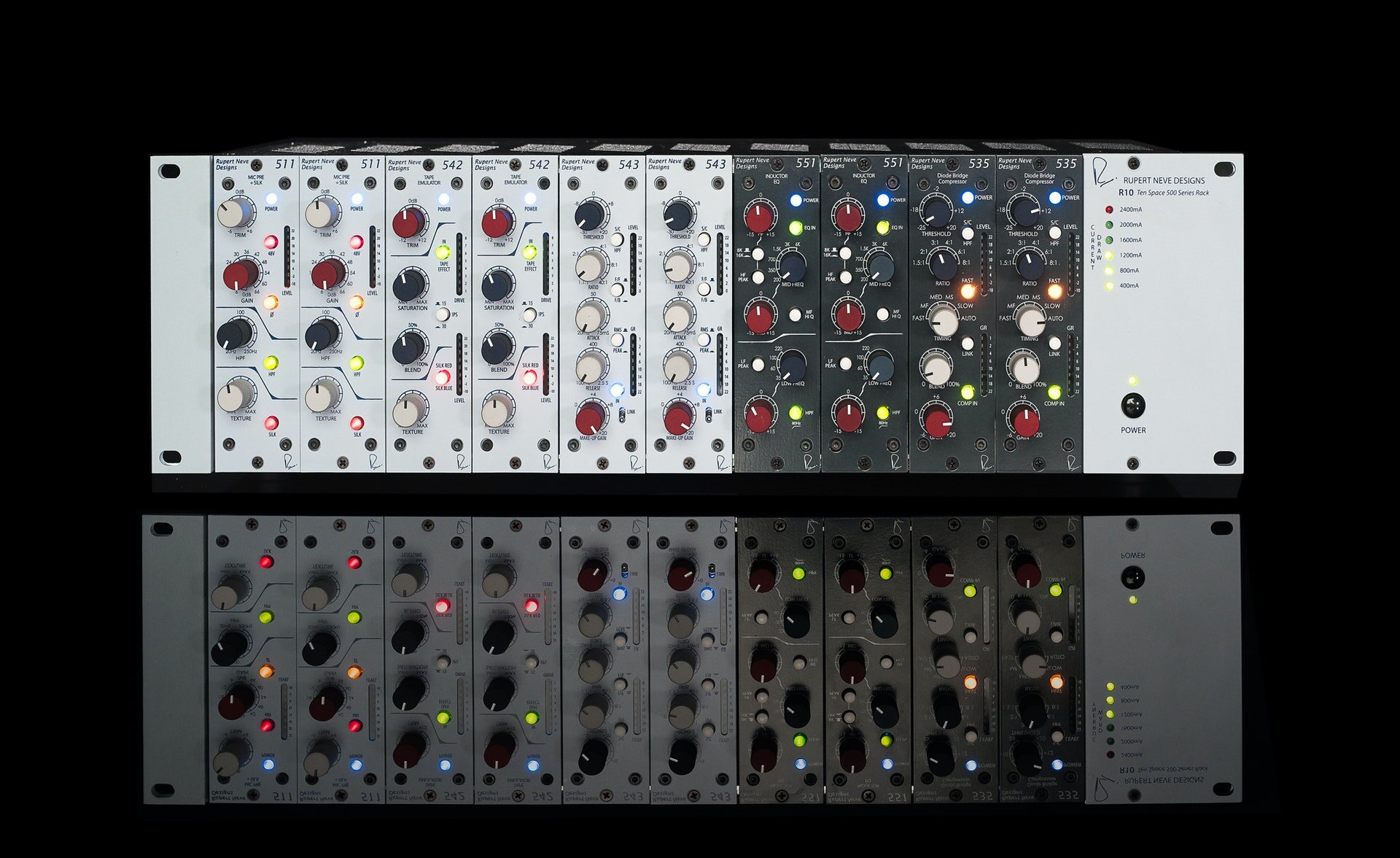
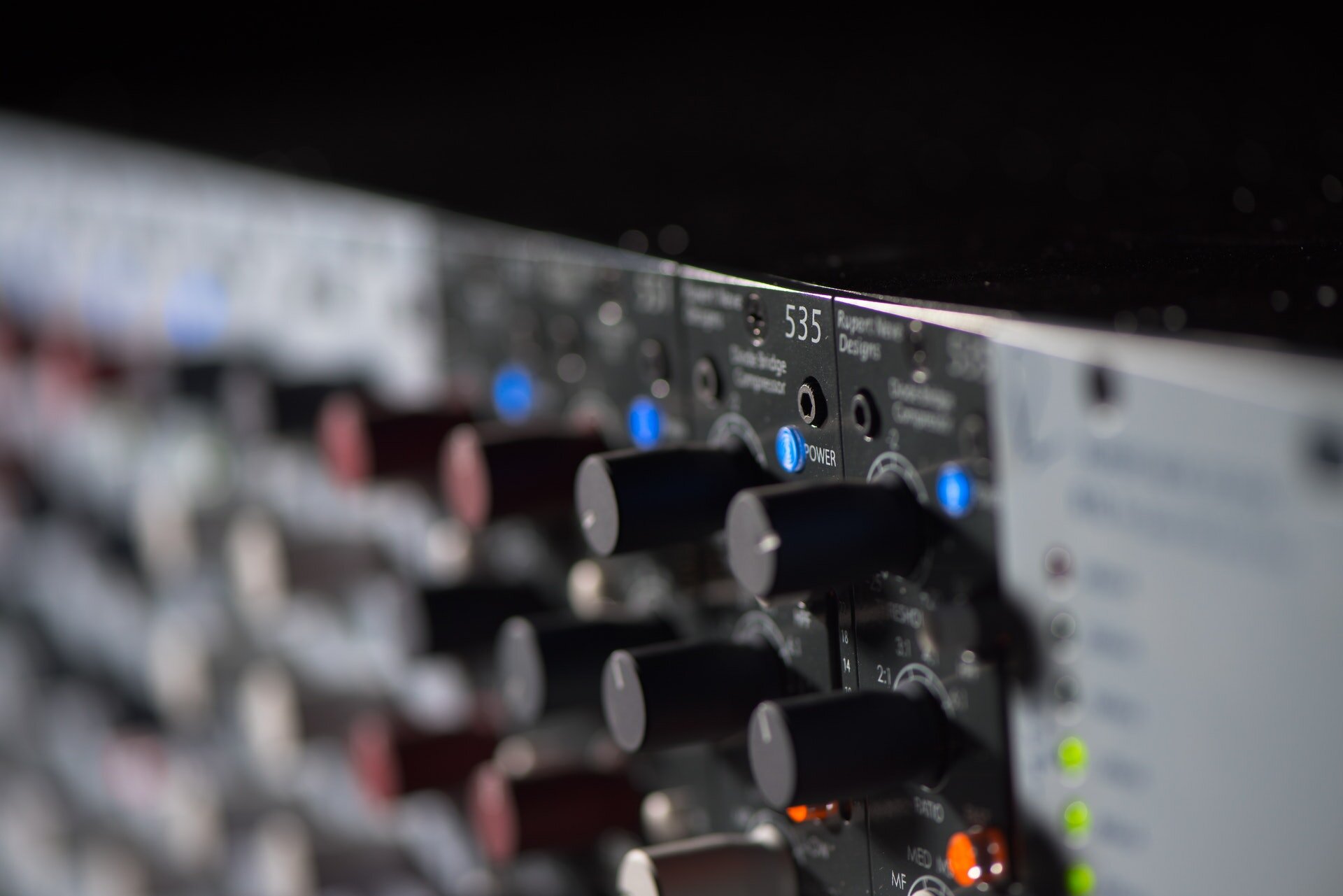
THRESHOLD
A 31-position detented pot that sets the level at which compression begins, from -25dB to +20dB. Turning this control counter-clockwise will increase the amount of compression; turning it clockwise will decrease the amount of compression.
RATIO
The RATIO control has six selectable positions on a rotary switch, allowing the user to set the slope of the compressor curve with pre-selected ratios of 1.5:1 through 8:1 for levels above the determined THRESHOLD. This range of compression ratios allows the user to compress as moderately or heavily as desired.
TIMING
The unified TIMING control is a six-position rotary switch that sets the compressor attack and release times. The timing can be further modified by the FAST button.
FAST (TC1) – Fast Attack (750 μs), Fast Release (130 ms)
MF (TC2) – Medium Attack (2.25 ms), Fast Release (130 ms)
MED (TC3) – Medium Attack (2.25 ms), Medium Release (400 ms)
MS (TC4) – Medium Attack (4 ms), Slow Release (725 ms)
SLOW (TC5) – Slow Attack (10 ms), Slow Release (800 mS - 1 S)
AUTO (TC6) – Medium Attack (5 ms), Dual Release (T1 500 ms, T2 1s)
FAST
The FAST switch speeds up all compressor time constants by 30%, effectively doubling the number of TIMING presets available to the user.
BLEND
The BLEND control has 31 detents and allows the user to mix the uncompressed (dry) signal with compressed (wet) signal. Turning the control towards 0% will shift the mix to fully uncompressed dry signal, whereas turning the control towards 100% will shift the mix to the fully compressed signal. This feature allows for parallel compression, enabling a wide range of compression subtlety.
GAIN
The GAIN control has 31 detents and allows the user to add make-up gain to the compressed signal in order to bring its level back up to unity with the uncompressed input signal. It is much easier to evaluate the tonal effect of the compressor (via the COMP IN switch) when the compressed output level is matched to the uncompressed input level, thereby eliminating potentially misleading level differences.
COMP IN
The COMP IN switch engages the compression circuit. By disengaging the COMP IN switch, the compressor is bypassed and the user can quickly compare the compressed sound to the dry input signal for an objective evaluation of the compressor’s sonic effect on the audio signal.
LINK
The LINK switch allows the compressor to be linked to another 535 compressor module via a side chain control voltage. In link mode, the compressor generating the greater side chain voltage (resulting in higher amounts of compression) will control the compression of both audio signal paths to maintain proper stereo center image while compressing.
SIDE CHAIN HPF
The S/C HPF switch allows the user to insert a 12dB/octave 150Hz high-pass filter in the compressor side chain. When this filter is engaged, the compressor will be considerably less responsive to information below 150Hz. For example: if used on a drum kit, the low end of the kick drum would have less proportional effect on the compression than a snare drum or cymbals, since a significant portion of the kick drum’s dynamic energy is focused below 150Hz.
LEVEL & GAIN REDUCTION METERING
These two LED meters provide highly accurate representations of both the output level of the compressor and the amount of gain reduction being applied to the input signal.
REVIEWS
“The 535 has changed my world on bass guitar. It sounds great on everything, however on bass, nothing has brought the bass guitar out of the mix like the 535. It gives this richness, texture and weight. It just sits thick and juicy, and it doesn’t step on the mix, it just fattens it and thickens it. It’s a fantastic compressor.”
Andy Meyer
Justin Timberlake, Madonna, Bruno Mars
“I’m loving the new 535 diode bridge compressor. To be able to have a compressor that sounds this massive, with a blend knob, is a 500 series rack is an audio dream come true…. I’d like to have 20, please!”
Greg Wells
Katy Perry, Keith Urban, Adele
“The RND 535 could be a significant addition to your mixing toolbox that will surely help inject some life, while solidifying those mix elements that need a hand. Looks great. Sounds great. Easy to use.”
“From the first source I ran through the Rupert Neve Designs 535, I was completely sold. I couldn’t believe how good this little compressor sounded.”
“These are very powerful tools for shaping sound. I ordered two of them of course, as I suggest you do.”
“At this price for this much performance makes these 535 comps a no brainer.”
“My heavens to Betsy!! UNBELIEVABLE! The geniuses at RND have given the world a low noise 21st century version of one of the greatest sounding dynamic tools in recording history.”
“I have no problem using this compressor on everything. Drums, gtrs, bass, vocals. Add color if you want. The blend knob is heaven sent. Drive hard, you get a more color and weight added. For Gentle compression the color is very subtle. Couldnt be happier.”

SPECIFICATIONS & DOWNLOADS
MAXIMUM INPUT LEVEL
+23.5 dBu
MAXIMUM OUTPUT LEVEL
+23.5 dBu
INPUT IMPEDANCE
10K Ohm
OUTPUT IMPEDANCE
40 Ohm
THD+N
@ 1 kHz @ Maximum Output Level, 22 Hz - 22 kHz BW.
0.001%
NOISE
22 Hz - 22 kHz BW, 40 Ohm balanced source. Noise specifications may vary depending on which 500 series chassis is being used, and / or interference from stray magnetic fields.
-101 dBu
FREQUENCY RESPONSE
10 Hz - 120 kHz, 30ft output XLR Cable.
+/- 0.1 dB
COMPRESSOR TIMING CONSTANT MEASUREMENTS
Note: TIMING measurements represent the full range between 1.5:1 and 8:1 ratio and FAST mode
FAST – Attack 250 μS - 2 mS // Release 100 mS - 200 mS typical
MF (MEDIUM FAST) – Attack 1 mS - 5 mS // Release 100 mS - 200 mS typical
MED (MEDIUM) – Attack 3 mS - 18 mS // Release 350 mS - 700 mS typical
MS (MEDIUM SLOW) – Attack 5 mS - 40 mS // Release 600 mS - 1 S typical
SLOW – Attack 10 mS - 80 mS // Release 800 mS - 1.5 S typical
AUTO – Attack 5m S - 40m S // Release T1 400-900 mS, T2 1-2 S typical
POWER CONSUMPTION (+/-16VDC): 100 mA
UNIT DIMENSIONS
1x 500 Series Module: 1.5” W x 5.9” D x 5.25” H
(3.8 cm W x 15 cm D x 13.3 cm H)
UNIT WEIGHT
1.5 lbs. (0.7 kg)
SHIPPING DIMENSIONS
10” W x 8” D x 3” H
(25.4 cm W x 20.3 cm D x 7.6 cm H)
SHIPPING WEIGHT
3 lbs. (1.4 kg)
FREQUENTLY ASKED QUESTIONS
Yes, all of our modules are designed within the 500 Series specification and we are not aware of any instances where they have not worked as intended.
The 535 is a diode bridge compressor, whereas the 543 is a VCA compressor. VCA designs are generally used for precise, clean level control, and don’t necessarily impart “a sound” of their own. A diode bridge design is more colorful, with lots of vibe and personality – great for adding thickness, weight, and warmth to tracks or mixes.
Absolutely. While the 535 may not be quite as “precise" as the 543 or Master Buss Processor, it can provide a very desirable “glue” on stereo mixes or masters. If the color is too much for the source, you can always dial down the blend control; lower ratios and slower time constant choices also impart less color.
The line amps and compressor circuitry in the mono Shelford Channel and 2-channel Shelford Diode Bridge Compressor are basically identical. The 535 shares the same basic diode bridge design, but the lower voltage and different line driving circuitry do have slightly different overall performance, due to the inherent limitations of the 500 Series format.
Yes, you can link the VCAs of two 535s with the R6 or R10 racks if the Link jumper is enabled for the pair of channels. Other brands of 500 Series rack may or may not include link functionality, so you should check with their manufacturer for specifics.
Keep in mind that you still need to set both units to trigger equally (i.e. front panel settings should be the same), and also that some tracks may sound better using dual mono compression rather than linked stereo. We recommend you listen to both linked and unlinked signal paths, paying attention to stereo imaging and apparent “width”, and make your own decision.
We utilize an electrogalvanized chassis to shield the internal circuitry from interference. With this process, it isn’t possible to “finish” the chassis metal (i.e. polishing or anodizing) so the machining marks from forming the metal will be visible. In normal operation inside a 500 series rack, this metal will never be visible.
We use standard 4-40 ¼" screws to secure our 500 series rack modules. Each of our modules and our R6 and R10 racks include these screws. Please contact our service department if you have questions or need additional screws.


